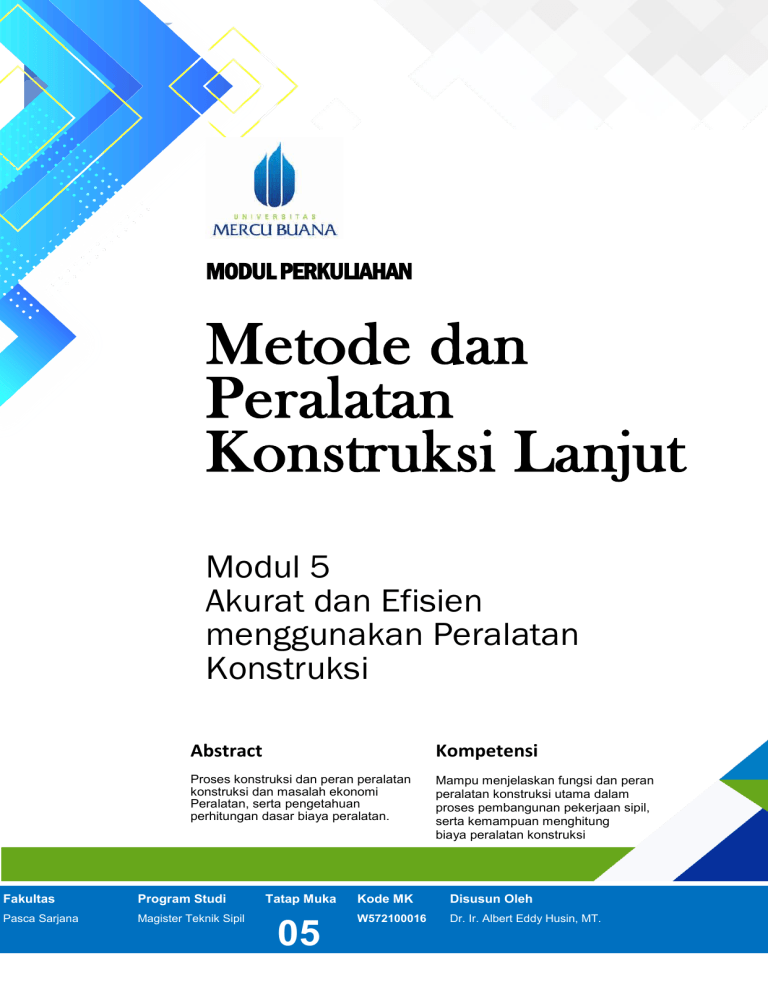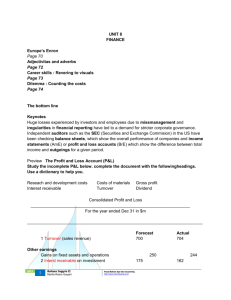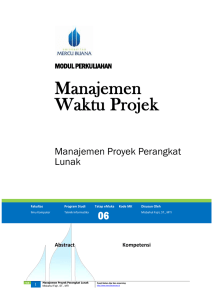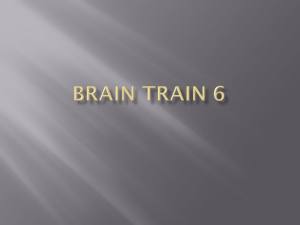
1 MODUL PERKULIAHAN Metode dan Peralatan Konstruksi Lanjut Modul 5 Akurat dan Efisien menggunakan Peralatan Konstruksi Abstract Kompetensi Proses konstruksi dan peran peralatan konstruksi dan masalah ekonomi Peralatan, serta pengetahuan perhitungan dasar biaya peralatan. Mampu menjelaskan fungsi dan peran peralatan konstruksi utama dalam proses pembangunan pekerjaan sipil, serta kemampuan menghitung biaya peralatan konstruksi Fakultas Program Studi Pasca Sarjana Magister Teknik Sipil Tatap Muka 05 Kode MK Disusun Oleh W572100016 Dr. Ir. Albert Eddy Husin, MT. eq uipment Selecting the right equipment for a construction project is crucial when it comes to budget, timelines, and execution. When a construction equipment manager has the information and tools they need to do their job properly, the entire project runs smoothly and equipment is better managed, scheduled, and maintained. Without proper equipment management, construction companies experience more equipment breakdowns and failures, projects running over budget, stalls of productivity, and decreased profitability. We’ve put together a list of the top construction equipment management guidelines to help your company implement industry best practices or improve on your existing processes. First, let’s get on the same page about the basics: What is construction equipment management? 2021 2 Nama Mata Kuliah dari Modul Dosen Pengampu Biro Bahan Ajar eLearning dan MKCU http://pbael.mercubuana.ac.id/ Construction equipment management is the process of directing and controlling construction equipment. Construction equipment managers are in charge of the equipment used by a construction company. They are responsible for purchasing, maintaining, and repairing the equipment, as well as storing, cleaning, and transporting them. They are also responsible for keeping inventory and assigning the right equipment for the job. Construction equipment managers use a process called equipment asset management to help them monitor and manage their equipment properly. What is equipment asset management? Equipment asset management refers to the process of directing and controlling equipment investments on behalf of a company — in this case, a construction company. This process carefully tracks, monitors, and forecasts equipment asset depreciation while also assessing and mitigating risk. Construction equipment managers will be in charge of this asset assessment while determining what equipment investments to make (or avoid) that will grow the company. Get a bird’s eye view of your fleet with real-time GPS tracking. Request a demo of Tread’s software today. Construction equipment management best practices Construction companies need to track costs, mobilize assets, measure utilization and be able to bill for specific job sites or tasks. To do this with accuracy requires detailed records, knowledge, planning, KPI (key performance indicator) tracking and real-time visibility and tracking of all equipment. 2021 3 Nama Mata Kuliah dari Modul Dosen Pengampu Biro Bahan Ajar eLearning dan MKCU http://pbael.mercubuana.ac.id/ Here are the top eight best practices for construction equipment management: 1. 2. 3. 4. 5. 6. 7. 8. 9. Inventory and track your equipment Understand the value of your equipment Provide operators with the proper training Inspect equipment after use Schedule preventative maintenance Be prepared for breakdowns Stay up-to-date on project details Go paperless Use the right software 1. Inventory and track your equipment Knowing what equipment is owned versus rented is essential to effective construction equipment management. This should include parts and tools. Knowing their location is the next step. Using a GPS tracking system on your trucks is the best way to do this. It gives equipment managers full visibility, which helps them assign trucks for pick up and delivery, track the transportation process, and return equipment to its rightful location at the end of each day. 2. Understand the value of your equipment Beyond knowing what you have and where it’s located, there should be well-documented and updated records of the value of each piece of equipment your company owns. Knowing the value of your equipment is essential when it comes to insurance claims, purchasing, renting, or liquidating equipment. Understanding the value of your equipment can contribute to calculations on rental costs, should you rent your equipment out. It also improves your understanding of the remaining service life, which assists with selling and liquidation. 2021 4 Nama Mata Kuliah dari Modul Dosen Pengampu Biro Bahan Ajar eLearning dan MKCU http://pbael.mercubuana.ac.id/ Keep a detailed record of each piece of equipment’s history such as: Purchase date and price Mileage at purchase Hours worked Working conditions Maintenance and repair details All of these variables contribute to the value of your equipment. Pro Tip: Routinely check auction websites for the asking and sold price of similar equipment. Use this information as part of your record-keeping and equipment management. 3. Provide operators with the proper training Since equipment managers can’t be everywhere at once (as much as they try), it is beneficial to have a properly trained team of operators. Well-trained operators contribute positively to the lifespan of equipment and to your company’s efficiency. If they are diligent with their daily checks and operate the machinery properly, this minimizes the risk of damaged equipment. Given that drivers spend so much time operating the machinery, they are the ones who know the equipment best. They can spot performance differences that can be flagged and assessed before becoming a major problem. Keeping an open line of communication with these team members gives managers valuable insights from a ground-level. As much as technology helps give you plenty of visibility into equipment and driver details, hearing it first-hand is invaluable. 4. Inspect equipment after use 2021 5 Nama Mata Kuliah dari Modul Dosen Pengampu Biro Bahan Ajar eLearning dan MKCU http://pbael.mercubuana.ac.id/ Even with a team of properly trained operators, things can still get missed during daily checks or employees may forget to include something in their reports. Either way, equipment managers must inspect all equipment after use. Harsh conditions on the job site or aggressive usage by the operator may cause damage that you’ll want to get ahead of before it becomes a problem and compromises the company’s overall profitability. 5. Schedule preventative maintenance Preventative equipment maintenance is one of the most important things a construction company can do to increase the longevity of their equipment and maintain productivity. When managers implement a heavy equipment preventative maintenance checklist for their operators to follow, this helps the whole team stay on top of equipment needs and allows for proper maintenance scheduling when needed. 6. Be prepared for breakdowns Since preventative maintenance isn’t a breakdown-free guarantee, it is essential to prepare for the worst. You may have enough equipment to support your ongoing contracts, but what happens if multiple pieces go down in a short period of time? Since breakdowns are inevitable, construction equipment managers need to have a plan in place to prevent major project delays and headaches for everyone involved. Be sure to include additional scenarios outside of breakdowns — for example, if a contractor or subcontractor doesn’t show up or if your go-to rental place is fully booked. 7. Stay up-to-date on project details 2021 6 Nama Mata Kuliah dari Modul Dosen Pengampu Biro Bahan Ajar eLearning dan MKCU http://pbael.mercubuana.ac.id/ Having a full understanding of all your construction projects is incredibly beneficial to construction equipment management in more ways than one. Knowing project details like timelines and budgets helps manage equipment requests and ensures the right equipment gets assigned to the right job. Understanding specifications like project location and distance from pick-up can help with equipment selection, equipment and operator scheduling, and even maintenance and billing. 8. Go paperless Efficient management requires accurate data. Keeping detailed records of construction equipment information will provide the necessary data to help with effective fleet management. To ensure that this valuable information is not lost, we recommend switching to a paperless system where all information can be stored securely and accessed anytime, anywhere by all stakeholders. Information that should be collected or uploaded electronically includes equipment utilization and repair records. This type of data can be used to identify trends, determine how profitable a piece of equipment is, and help with forecasting. Equipment managers may also discover underutilized assets that would be better to rent or subcontract, rather than own. 9. Use the right software Effective construction equipment management requires data and a drive for constant optimization. Using the right management software to manage trucks and vehicles makes the role of a construction equipment manager much easier. Ideally, construction equipment managers will have software that helps with: 2021 Equipment tracking 7 Nama Mata Kuliah dari Modul Dosen Pengampu Biro Bahan Ajar eLearning dan MKCU http://pbael.mercubuana.ac.id/ Inventory control Project management Maintenance scheduling Warranty tracking Work order management Look for management software that is cloud-based so information is never lost or estimated. Make sure your technology includes sharing capabilities so all vendors and stakeholders can access the same information, which helps eliminate disputes. How Tread can help Tread is a fleet management and dispatching software that helps construction companies manage their vehicles. Equipment managers get full visibility into their trucks through real-time GPS tracking. They can collect accurate data on how their equipment is being used, cycle times, site visits, miles traveled, and more. Managers can assign and schedule the right equipment for the right job with Tread’s Visual Schedule tool — arrange each day on a timeline view, sort the schedule by driver, company, availability, and more. Information about the assignment and project are easily visible and are flagged when there is a scheduling conflict. Tread’s Estimated Duration tool provides estimates on how long assignments will take so managers can create more accurate schedules. The tool also displays task durations and accurate views of the daily schedule so managers can identify potential conflicts or track utilization. The entire Tread system is paperless so information is never lost. All information is stored securely in the cloud and can be accessed by multiple vendors, helping everyone stay on the same page. Finally, Tread’s Site Activity Report compares construction projects by tracking the average and total time spent by a driver on each job site. Entry 2021 8 Nama Mata Kuliah dari Modul Dosen Pengampu Biro Bahan Ajar eLearning dan MKCU http://pbael.mercubuana.ac.id/ and exit times for each driver’s cycle time provide a clean audit trail, meaning equipment is better managed and tracking costs are completely accurate. 2021 9 Nama Mata Kuliah dari Modul Dosen Pengampu Biro Bahan Ajar eLearning dan MKCU http://pbael.mercubuana.ac.id/



